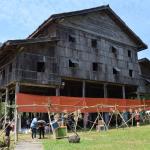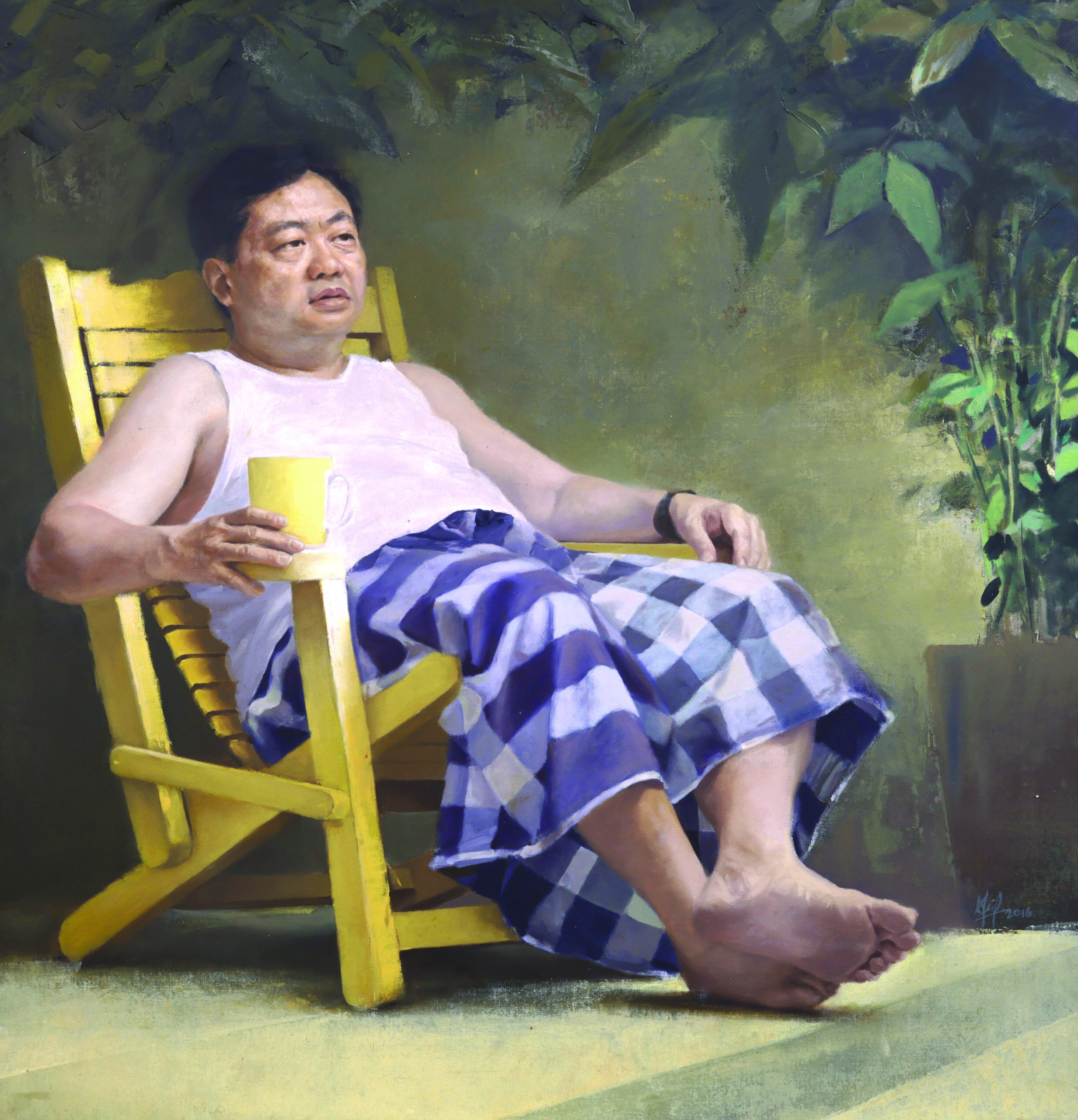Also known as the Anti-British National Liberation War, the Malayan Emergency was a guerrilla war fought in British Malaya between communist pro-independence fighters of the Malayan National Liberation Army (MNLA) and the Commonwealth military forces.
To understand why the guerrilla war started, we need to go back to the end of World War II.
After the war had ended, the Japanese left Malaya with a weak economy. There was high food price inflation, many people were unemployed and even those who were working had to suffer with low wages.
Some Malayans were naturally unhappy and a number of them turned to communism. These communists fought to win independence for Malaya from the British empire and to establish a socialist economy.
At the same time, the British were preparing Malaya to be an independent country, but were only willing to pass on the power to a government who put British interests in mind.
One of their interests was in Malaya’s rubber and tin resources. These were crucial for the British as they used them to pay war debts to the United States as well as to recover from the economical damage from World War II.
The result from this difference in interests was a conflict that spanned more than 12 years from June 1948 to July 1960.
Here are five controversies surrounding the Malayan Emergency that they never told you in history class:
1.Batang Kali Massacre
This horrific event is often referred to as ‘Britain’s My Lai’. The Mỹ Lao Massacre was the mass murder of unarmed South Vietnamese civilians by the US troops on March 16, 1968 during the Vietnam War.
It is believed that between 347 and 504 unarmed people were killed by American soldiers.
Meanwhile, the Batang Kali Massacre was the mass murder of 24 unarmed villagers by the Scots Guards under the British Army on Dec 12, 1948.
The killings took place in a rubber plantation near Batang Kali, Selangor.
The British soldiers rounded up the civilians and separated the men from the women and children for interrogation.
Later, a total 24 unarmed men were killed using automatic weapons fire. They ranged from teenage boys to elderly men.
Their bodies were found to have been mutilated and their village burned to the ground.
The first one to respond to the killing was the British government. After the massacre, British diplomats introduced Regulation 27A, which authorised ‘the use of lethal weapons’ to ‘prevent escape from arrests’.
In other words, it was ‘legal’ to kill the 24 unarmed men since they were allegedly trying to escape from being arrested.
However, in 1969, six of the Scots Guards on patrol that day gave interviews to The People newspaper, claiming that they had been ordered to massacre the villagers in Batang Kali. Meanwhile, two sergeants insisted that the men had been shot because they tried to escape.
Over the years, there has been an ongoing court battle between the UK government and the families of the civilians executed by British troops.
In November 2015, the United Kingdom Supreme Court ruled that the British government was not obliged to hold a public inquiry into the Batang Kali massacre even though it may have been a war crime because the atrocity had occurred too long ago.
2.Headhunting by Iban trackers
During the Emergency, Iban trackers were brought in from Sarawak by the British to be attached to units who were fighting the Communists.
Their primary task was not to fight but to track. Still, there was a strong element of danger in the job.
In April 1952, the British communist newspaper the Daily Worker published a photograph of British Royal Marines in a British military base in Malaya openly posing with decapitated human heads.

The Commonwealth forces instructed the Iban trackers to decapitate suspected MNLA members for identification purposes.
They also allegedly permitted the trackers to take the scalps of corpses to be kept as trophies.
Regardless of the reason, this act of decapitating the heads of the enemies were controversial and the controversy was even brought up in the British Cabinet.
Herbert Ekwe-Ekwe wrote in his book British Counterinsurgency, 1919-60, “On 2 May 1952 the First Lord of the Admiralty told the Cabinet that the decapitation had been performed solely for identification purposes after the bandit had been killed. While he agreed that taking the photograph was ‘reprehensible act’, he hastened to point out that the patrol involved had lost an officer and a well-loved corporal, and that the ‘indiscretion’ was the work of private soldiers.”
After the Cabinet had considered the matter for some time, they eventually agreed that British troops in Malaya ‘should be instructed to discontinue the practice’.
3.New Villages
In order to separate guerrillas from their supporters within the rural civilian populations, the British came up with a method.
The plan was to force these civilians to resettle in brand new areas far from the communists.

One of the biggest critics of this counterinsurgency method was British historian John Newsinger.
He wrote in the paper Hearts and minds: The myth and reality of British counterinsurgency,
“The key to British victory in Malaya was the so-called “Briggs Plan”. This was a counter-insurgency strategy proposed by the new director of operations, General Harold Briggs, that involved the forcible resettlement of Chinese squatters, living and farming in the jungle, into so-called new villages. The support of these communities was vital in sustaining the guerrilla units in the jungle. The British had tried intimidating them and now opted for something considerably more drastic.
“Between 1950 and 1952 some 400,000 people had their homes, possessions and crops destroyed before being herded into camps where they could be effectively policed. Here they lived under police state conditions, without civil liberties or freedom of movement. They were held behind barbed wire, overseen by guard towers and searchlights, their every move watched by informers and spies, and they were subjected to the arbitrary brutality of the police. Alongside the round up of the squatter population, the British also set about forcibly “concentrating” Chinese and Indian plantation workers and tin miners in policed camps under the control of their employers.
“By the end of the Emergency some 650,000 people, workers and their families, primarily Chinese, had been brought under police supervision and control. Something like half of Malaya’s Chinese population was forcibly resettled in this way. This was repression on a massive scale that had nothing whatsoever to do with any notion of “hearts and minds”. And, of course, the casual brutality and occasional murder continued.
“In 1953 a British officer wrote home to his parents that “no Chinese rubber tapper is safe when we search an estate, my men are trigger-happy with Chinese and several platoon commanders have had to plant grenades on tappers and call them bandits when their men have made ‘a small error in judgement’.”
“Alongside this resettlement policy, the British interned over 30,000 people without trial, a figure that would have been much higher except for the fact that they also deported large numbers of Chinese men and women suspected of Communist sympathies.
“By 1955 some 31,245 Chinese people, many of them born in Malaya, had been expelled from the colony.”
After Malaya was liberated from the British, these resettlement areas which were called ‘New Villages’ became ordinary residential towns and villages.
4.Beating, torturing and killing of civilians by British troops
British journalist and historian Brian Lapping in his paper End of Empire (1985) said that there was ‘some vicious conduct by the British forces, who routinely beat up Chinese squatters when they refused, or possibly were unable, to give information about the insurgents’.
Officially, there were 38 confirmed killings of civilians by British military forces during the emergency.
On top of that, there were 56 fatal shootings by British security that have been flagged as suspicious.
The justifications for these killings were that they were shot while attempting to flee or failing to stop when ordered to do so.
Instead of confirming these individuals were the ‘bandits’ or ‘insurgents’, the reports used the terms such as ‘Chinese’, ‘Indian’, ‘squatter’ or ‘suspect’.
The absence of evidence for these fatal shootings raised the question of whether war crimes were committed during the emergency.
5.The use of Agent Orange
During the Vietnam War, there was a US military operation called the Operation Ranch Hand.
It involved spraying an estimated 19 million gallons of defoliants and herbicides over rural areas of South Vietnam in an attempt to deprive Viet Cong of food and vegetation cover.
The use of these herbicides during the Vietnam War was controversial. However, the American government maintained the legality of using this method because the British did the same thing before.
Britain was the first nation in history to use herbicides and defoliants as a military weapon, and Malaya was the first region to be exposed to this method of warfare during the Malayan Emergency.
It was used to destroy bushes, food crops and trees to deprive the insurgents of both food and cover.
This mixture of the herbicides and defoliant were later nicknamed Agent Orange.
After the Vietnam War had ended, the Vietnam government claimed that there were up to four million people were exposed to the chemical and as many as three million people have suffered from the effect of it.
The health effects include various types of cancer such as chronic B-cell leukemia, multiple myeloma, prostate cancer, lung cancer and many more.
For Malaya, the estimated number of civilians and insurgents who were reported to have suffered from the effect of the defoliants is 10,000.
But many believed that the number is much larger. Unlike the US, the British has remained silent about how much of Agent Orange was used during the Malayan emergency making it difficult to confirm the real number of how many people have been affected by the chemical.
In fact, the prolonged absence of vegetation caused by defoliation has also resulted in major soil erosion to areas of Malaya.













